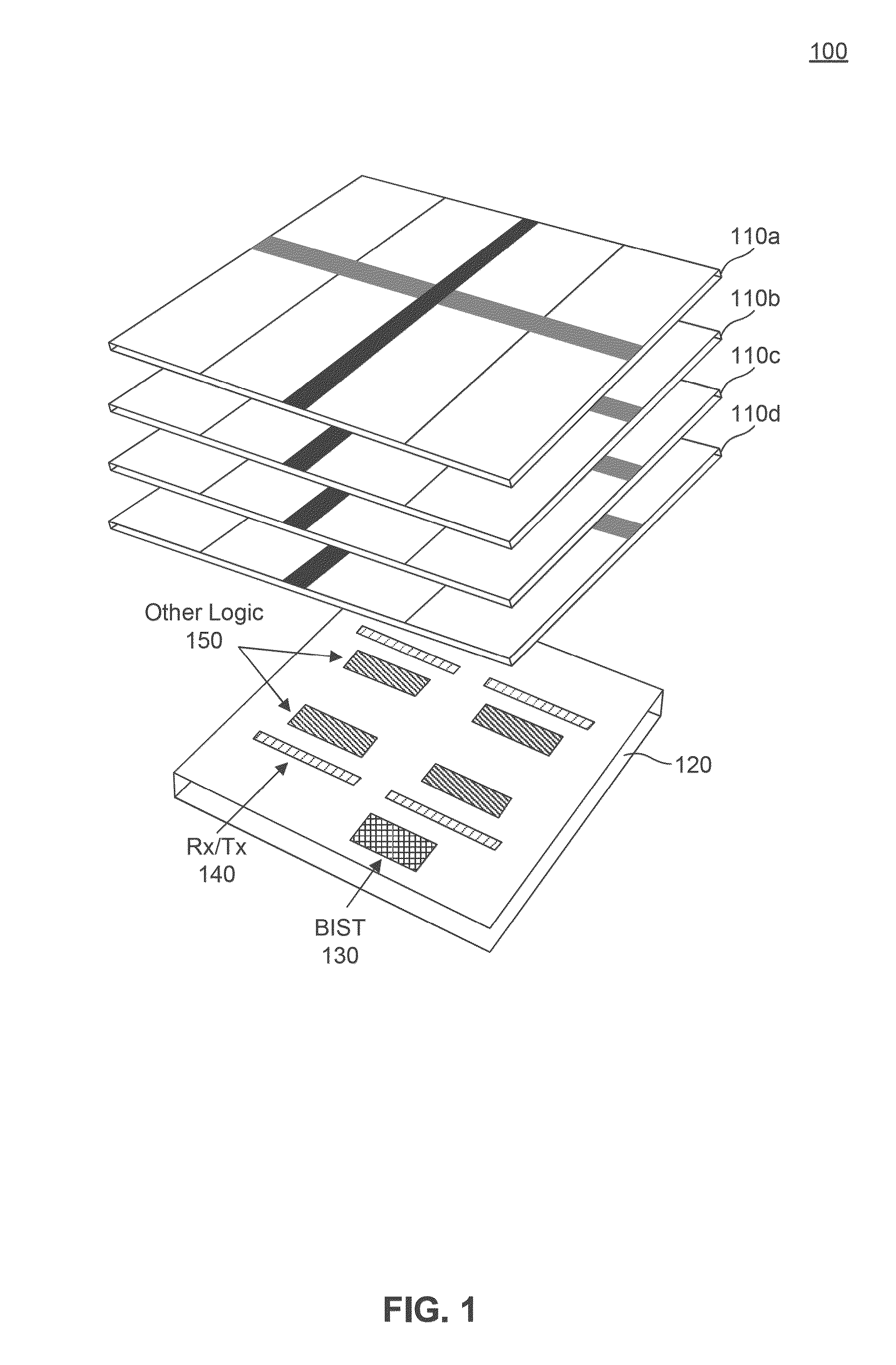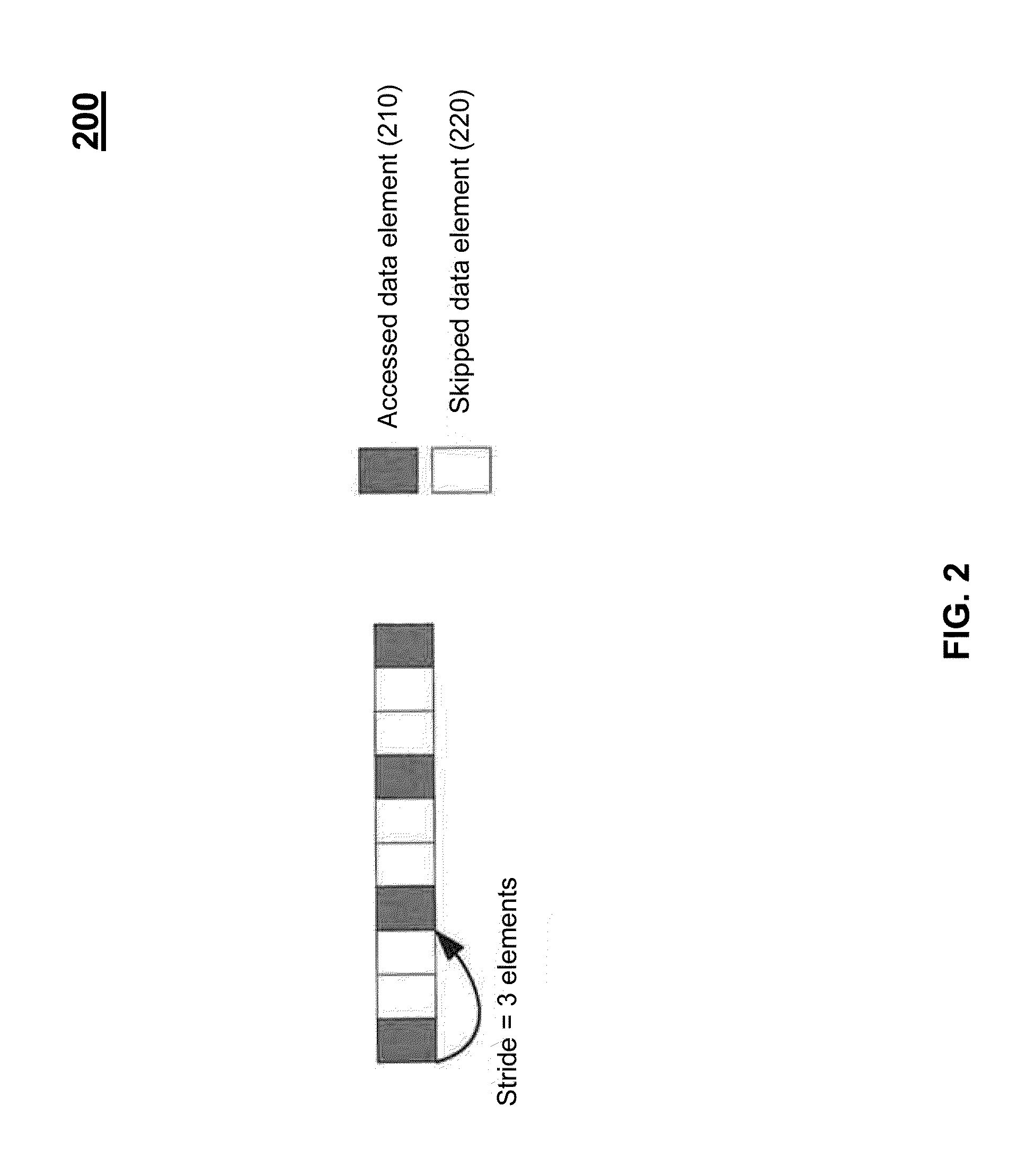Compound Memory Operations in a Logic Layer of a Stacked Memory
- Summary
- Abstract
- Description
- Claims
- Application Information
AI Technical Summary
Benefits of technology
Problems solved by technology
Method used
Image
Examples
Embodiment Construction
[0008]Some embodiments move address generation and control logic to a logic layer stacked with memory to reduce performance and energy overheads. Some embodiments apply to die-stacked memories that contain a logic layer in addition to one or more layers of DRAM (or other memory technology). This logic layer may be a discrete logic die or logic on a silicon interposer associated with a stack of memory dies. Some embodiments place additional circuitry on the logic layer to implement functionality to perform various data movement and address calculation operations. This functionality enables compound memory operations, i.e., a single request communicated to the memory that characterizes the accesses and movement of many data items. This eliminates the performance and power overheads associated with communicating address and control information on a fine-grain, per-data-item basis from a host processor (or other device) to the memory. This approach also provides better visibility of mac...
PUM
 Login to View More
Login to View More Abstract
Description
Claims
Application Information
 Login to View More
Login to View More - R&D
- Intellectual Property
- Life Sciences
- Materials
- Tech Scout
- Unparalleled Data Quality
- Higher Quality Content
- 60% Fewer Hallucinations
Browse by: Latest US Patents, China's latest patents, Technical Efficacy Thesaurus, Application Domain, Technology Topic, Popular Technical Reports.
© 2025 PatSnap. All rights reserved.Legal|Privacy policy|Modern Slavery Act Transparency Statement|Sitemap|About US| Contact US: help@patsnap.com



